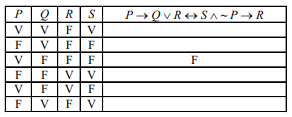Questões de Concurso
Para prefeitura de guarabira - pb
Foram encontradas 360 questões
Resolva questões gratuitamente!
Junte-se a mais de 4 milhões de concurseiros!
Podemos afirmar que a EUTONIA é uma pedagogia e uma terapia corporal que propõe processos que estimulam um desenvolvimento pessoal que resultam em transformações corporais, colocando o indivíduo em situação de pesquisa em relação a sua própria individualidade. A partir dessa compreensão, analise as proposições e coloque Vpara verdadeiro e F para falso.
( ) A Eutonia foi criada por Moshé Feldenkrais (1904-1984), nascido na Alemanha, tendo criado a primeira Escola de Eutonia em 1957 na Dinamarca.
( ) A Eutonia propõe um caminho através da experiência e da observação do corpo; é um percurso que integra a arte, a educação e a terapia. A vivência e a experiência são fundamentais neste caminho.
( ) O termo EUTONIAé composto por duas palavras gregas: “eu” que significa harmonioso, bom e “tônus” que equivale à tensão, ou seja, tonicidade, grau de tensão ou elasticidade de nossas fibras musculares.
( ) O trabalho em Eutonia visa o estabelecimento da tensão harmoniosa, o equilíbrio das diferentes tensões que coexistem no corpo, um equilíbrio do tônus geral. O propósito da Eutonia é a regularização, normalização e equilibração das tensões.
Marque a alternativa que contém a sequência CORRETA de preenchimentos dos parâmetros.
I- FA-Forma. II- FU-Função. III- SG-Significado.
( ) Refere-se ao modo como a ocupação influencia o desenvolvimento, a adaptação, a saúde e a qualidade de vida. ( ) Refere-se à experiência subjetiva da participação nas ocupações, onde são atribuídos valores pessoais, culturais e sociais. ( ) Refere-se aos objetivos que são diretamente observáveis.
A sequência CORRETA dessa associação é:
I- Aocupação é o mecanismo pelo qual os indivíduos demonstram suas habilidades na sociedade e no mundo. II- Quanto mais sofisticada for a ocupação, maior será a alteração ambiental, e consequentemente, provocará um maior desenvolvimento pessoal e comunitário. III- As pessoas são produtos de suas ações propositivas, pois a ocupação que transcende a mera atividade instintiva é a força que criou a espécie humana e a força pela qual a humanidade desenvolveu o mundo. IV- Aocupação não é apenas um objeto da função humana, mas é parte integrante do ser humano, sugere a necessidade de explorar os efeitos biológicos da necessidade humana de “fazer”.
É CORRETO o que se afirma em:
Qual das alternativas representa o 11º e o 12º termos da sequência lógica a seguir?

Se V representa a verdade e F a falsidade, analise os valores lógicos ocultos da última coluna da tabela-verdade abaixo.

Indique a alternativa que responde CORRETAMENTE:



TEXT IV

TEXT IV

TEXT III


Answer question according to TEXTII.
The phrase “To this end” (lines 6 and 7) refers to


Answer question according to TEXTII.
The research results indicate that

Considering the abstract of the paper written by Mohammad Amiryousefi, which of the following statements is CORRECT?
“In spite of all these positive points, since their publication, it is possible to identify a strong resistance to the focus on reading on the part of many teachers.” The expression in spite of can be substituted by
“[...] both because of its results (which in time were revealed to be less efficient than believed, especially in terms of fluency) and its theoretical assumptions [...]”. The word which
Some relevant theoretical assumptions underlying Brazilian National Curricular Parameters (PCN) concerning ELTare: